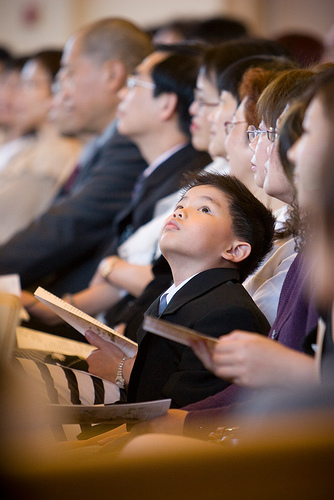Come to the Dance
Isaiah 6:1-8
Crossing the threshold from our individual paths to a gathering is a huge step. It takes preparation, focus, and a unity of purpose. There are so many gatherings we attend in our lives. There are entertainment experiences, political rallies, community gatherings, sporting events, picnics, weddings, graduations, etc. When we gather there are three primary roles or functions of the participants. There is the host/facilitator, the audience (usually this is us) and those on stage or the focus of the gathering. All of these parts are played by someone when we gather. In a wedding for instance, a bride most often choreographs the movement of the ceremony; she usually picks the venue, the number in the wedding party, the music, flowers and so forth and therefore assumes the role of facilitator and is also the focus of the gathering.
Among the myriad of gatherings we attend in life, how are these roles sorted out in worship? I believe the roles I have described above are sometimes confused when we come to worship. Who is the host? Is it God, or the pastor? Is the audience the congregation? For there to be effective, meaningful worship directed toward God, the roles need to be clear.
When you attend worship which role do you assume. A Danish theologian and philosopher, Soren Kierkegaard, identified three roles in worship that are much like a dramatic presentation. God is the audience, the congregation is on stage and the worship leaders are the directors. Be introspective for a moment and ask yourself a few questions about how you talk or think about worship. Do you have preferences in your worship style? That is, do you prefer a more reverent, structured worship time that is quiet, contemplative, and solemn or do you prefer a more celebrative atmosphere that is marked by shouts of joy, spontaneity and less structure. Are there things you don’t like in worship? Do you have favorite songs? These questions sound like survey questions for an audience, don’t they? Have you assumed the role of audience in your worship gathering?
As in many of the gatherings of our lives, we are most often the audience. Having participated in each role, I would think the audience has the easiest role. You just show up. Not a lot of preparation is involved and you can just sit back, relax and watch. There is so much in our lives that we “watch”. We watch sports, television, concerts, weddings, graduations and so forth. We watch so much, it makes it difficult to step into different roles. Taking the stage takes preparation, planning, and focus.
I remember a few small gatherings early in the courtship of my wife that taught me about these roles of worship. For reasons that are too lengthy to explain here, I was not a man of great means when we were dating. I recall coming up short for the fare on some of our dates. I remember she would roll her beautiful eyes and reach for her purse to cover the tab. These occurrences brought a dramatic paradigm shift. Our roles in this small gathering got all messed up. I was no longer the host, as she became the hostess for the evening. I was thanking her for the ice cream. She had paid the price for the time together. Soren’s neatly divided roles got all confused. I had been trying to step on to the stage to impress her and win her love, but she stole the spotlight and showed her love. She was no longer the audience. The dance had begun.
When we gather to worship, God wants to hear from us. He wants to watch us worship Him. At any moment He may take over and remind us He has already paid the price that makes the gathering possible. Without the sacrifice Jesus made that provided the bridge of forgiveness, our worship of God would go unobserved. We need to be careful what role we assume in worship. He wants our best, which ironically, He has made possible.
the friar


